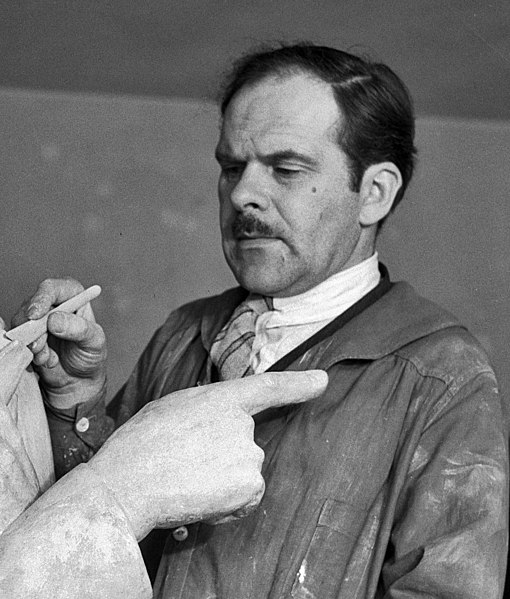Ukranian, 1887-1964
‘None of the sculptors since Rodin made a greater impact in his time like Archipenko. It was in the first decade of his artistic life that he created new laws of modern sculpture and rose in art history as a leader of the art revolution and drew in many others.’ Svyatoslav Hordynsky, Ukrainian artist, poet and writer.
Like many Eastern European artists of his generation who moved to Western Europe, he came to Paris from the Ukraine in 1908, during the formative stage of Cubism. During his time in Paris he became part of the avant-garde circle and cultivated a distinct visual language, becoming one of the first artists to apply the principles of Cubism to sculpture, translating the concept of the two-dimensional fractured masses and shifting planes of cubism into three-dimensional forms. He wrote- ‘Traditionally there was a belief that sculpture begins where material touches space. Thus, space was understood as a kind of frame around the mass. … Ignoring this tradition, I experimented, using the reverse idea, and concluded that sculpture may begin where space is encircled by the material.’–
Cubism was one of the most influential visual art styles of the early twentieth century. It was created by Pablo Picasso and Georges Braque in Paris between 1907 and 1914. Other influences on early Cubism have been linked to Primitivism and non-Western sources. The Cubist painters rejected the inherited concept that art should copy nature, or that artists should adopt the traditional techniques of perspective, modelling, and foreshortening. They wanted instead to emphasise the two-dimensionality of the canvas. So they reduced and fractured objects into geometric forms, and then realigned these within a shallow, relief like space. They also used multiple or contrasting vantage points. Previously, the conventions of sculpture had demanded that figures be represented in mass. Archipenko was after something totally different – he began to replace solid volume, such as heads and torsos, with voids


